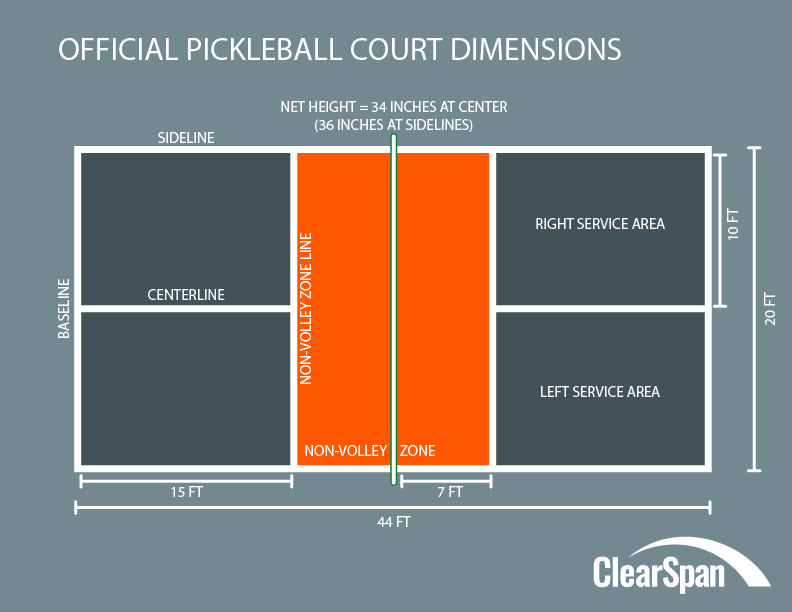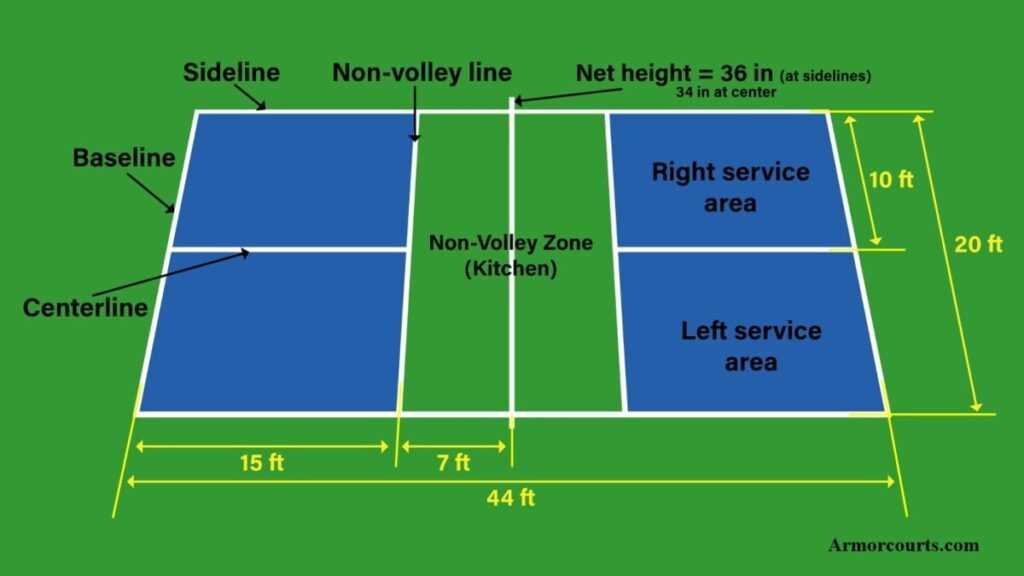Exactly How Illinois and Midwest are Leading the Way in Pickleball Courts Style & Building
Exactly How Illinois and Midwest are Leading the Way in Pickleball Courts Style & Building
Blog Article
Secret Consider the Building And Construction of Pickleball Judiciaries: From Site Selection to Last Surfaces
The construction of pickleball courts incorporates a variety of vital elements, beginning with the option of an ideal site that stabilizes access with environmental considerations. Crucial aspects such as court measurements, surface products, and drain systems dramatically impact not just the high quality of play but additionally the durability of the facility. Attention to lighting and completing touches can boost the overall experience for players and viewers alike. Recognizing how each of these components interrelates might expose insights that are usually neglected, motivating a more detailed evaluation of finest techniques in court construction.
Website Option Standards
When getting started on the building and construction of pickleball courts, it is necessary to pin down the site option standards that will certainly make certain optimum playability and access. The area needs to be quickly reachable for players, ideally positioned near suburbs or area facilities, to motivate participation.
Moreover, the surface needs to be degree and steady, as uneven ground can lead to safety and security threats and impact gameplay. Sufficient drainage is additionally essential; picking a site with good water drainage will certainly help keep court problems during damaging climate.
One more important factor to consider is the accessibility of utilities. Accessibility to power and water is essential for illumination and maintenance objectives. Additionally, closeness to car park centers is vital, facilitating very easy gain access to for gamers and spectators alike.
Environmental variables can not be ignored; natural color from trees can enhance gamer comfort, while direct exposure to prevailing winds might disrupt play. Zoning guidelines and community support need to be thought about to make certain that the job straightens with local standards and receives the backing it requires for effective implementation. By very carefully evaluating these requirements, stakeholders can develop an inviting and functional atmosphere for pickleball fanatics.
Court Capacities and Format
To make sure optimum gameplay and adherence to regulations, the measurements and format of pickleball courts must be very carefully defined. A common pickleball court determines 20 feet in size and 44 feet in length for both singles and doubles play. The suggested design consists of a non-volley area, frequently described as the "cooking area," extending 7 feet from the internet on either side. This area is critical, as it affects gamer positioning and shot option - Illinois and midwest.
The internet height is set at 36 inches at the sidelines and 34 inches at the center, creating a small dip that affects ball trajectory. Court markings are equally important; lines should be 2 inches wide and distinctive in shade to make sure exposure.
Furthermore, a buffer zone bordering the court is suggested, commonly expanding 5 to 10 feet beyond the sidelines and baselines to accommodate gamers' motions and improve safety. Correct design and dimensions not only make certain conformity with official regulations yet likewise improve the overall having fun experience, fitting both recreational and affordable play. Cautious planning in these locations is vital to the successful building and construction of pickleball courts.
Surface Area Material Options
Picking the ideal surface product for pickleball courts is vital for guaranteeing optimal gamer performance and safety and security. The option of surface area can dramatically impact gameplay, including round bounce, traction, and gamer comfort.
There are numerous options readily available, each with its unique features. Asphalt is a prominent choice because of its sturdiness and low maintenance needs. It offers a strong playing surface area that can withstand different weather problems but might require routine resurfacing.
Concrete is another extensively utilized product, providing superb durability and a smooth coating. It enables for consistent round bounce yet can be difficult on players' joints, making it less desirable for long-lasting play without correct cushioning.
For those looking for enhanced comfort and shock absorption, cushioned acrylic surfaces provide a practical choice. These surface areas integrate a base layer with an acrylic overcoat, providing improved grip and a softer feel, which is beneficial for minimizing the threat of injuries.
Finally, artificial lawn is gaining grip, particularly for multi-purpose facilities. Its versatility and lower upkeep needs make it an eye-catching choice, though it may not provide the same sphere action as standard tough courts. Mindful factor to consider of these options will ensure an optimal playing environment.
Drainage and Lighting Considerations
Proper water drainage and efficient illumination are important parts in the building and construction of pickleball courts, substantially influencing both playability and safety and security. Appropriate drainage systems protect against water build-up, which can lead to slippery surface areas and damage to the court framework.
Lighting is similarly critical, especially for courts planned for evening usage. Correct illumination improves presence, guaranteeing that gamers can see the round clearly and minimizing the threat of accidents. The placement of lights components ought to be tactically intended to eliminate shadows and give even circulation of light across the court. LED lights are suggested for their power performance and longevity, providing brilliant lighting while lowering operational costs.

Final Surfaces and Maintenance
After attending to drain and illumination considerations, focus resource transforms to the final coatings and ongoing upkeep of pickleball courts. Illinois and midwest. The option of surface area material is crucial, as it affects both playability and longevity. Common alternatives include acrylic layers and specialized sporting activities surface areas that provide optimal traction and cushioning. These surfaces need to be applied in numerous layers to guarantee resilience against climate elements and put on.

Seasonal maintenance could include resurfacing every couple of years, depending on use and environmental factors. Effectively maintaining webs, court lines, and bordering areas is equally important to offer a safe and delightful having fun experience. By buying quality coatings and sticking to an organized maintenance routine, center proprietors can ensure their pickleball courts continue to find out be in outstanding problem for years to come.
Final Thought
To conclude, the successful construction of pickleball courts rests on precise interest to numerous vital factors. Website option ought to prioritize access and surface security, while court dimensions and design should stick to ideal standards for gameplay. The option of surface area product dramatically influences player safety and efficiency. Additionally, efficient drainage and ample lights contribute to court long life and exposure. Quality coatings and a robust upkeep routine are essential for maintaining the court's problem, boosting the general experience for players and spectators alike.
Report this page